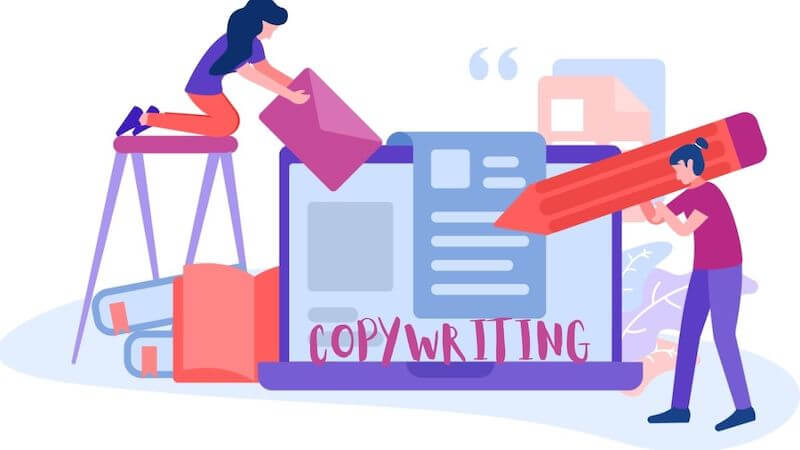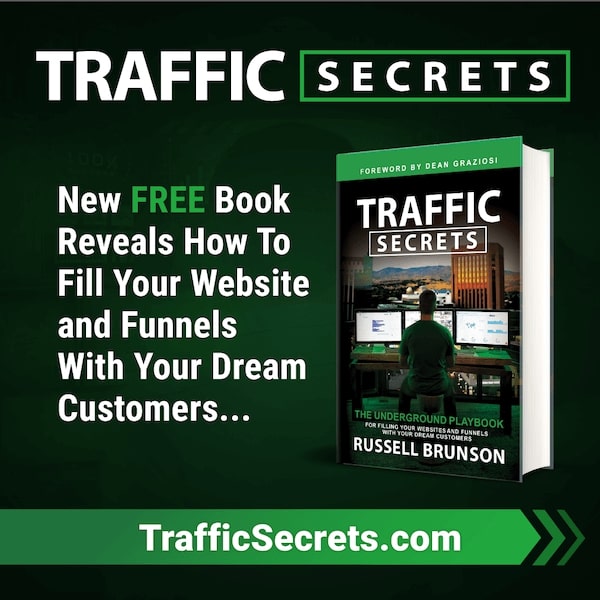As an internet marketer, one of the most important tools in your arsenal is Copywriting. It does not matter if you are doing YouTube videos or managing a blog; incorporating copywriting on your blog / website or video can improve your traffic, sales, and increase your profits.
In this post, we will walkthrough the basics of copywriting and share with you the golden copywriting secrets for internet marketing. Stay till the end for a bonus book on Copywriting that can upscale your Copywriting skills to that of a pro marketer.
What is Copywriting?
Copywriting is the process of persuasion through content creation. Copywriting taps into the emotions of your audience, builds curiosity and then persuades them to take some action related to your business. Copywriting is different from content writing in that it is designed for a specific purpose - marketing.
Copywriting is very visible in ads and slogans. It can be seen in the written caption of a Facebook ad, the headline of a Google ad or a the catchy phrase or description of a Youtube Ad.
The ultimate goal of any copywriting strategy is to drive marketing and persuasion in your readers to take some action. Driving the end result of taking action can trigger confusion that copywriting is similar to call to action or CTA. In reality they are very different. A call to action is nothing more than an invitation for the audience to do something. See the example below:
Book a Photo Session Now


Copywriting, on the other hand, tends to follow the below criteria:
- Stir an emotion on an individual
- Convince the person that you are credible
- Motivate them to take action.
The actions we are talking about is tangible. Some examples are:
- Schedule an appointment
- Click on a link
- Buy a product
- Register for an account
Most of the time, we see copywriting in the form of slogans. They are everywhere. The text in the marketing materials is called copy, and this is why it is called copywriting.
Where do you see copywriting texts? Here are some examples:
- Flyers and brochures
- TV and radio commercials
- Magazine and newspaper ads
- Internet ads for both text and video
And here is an example of a good copy of MacBook air from Apple:
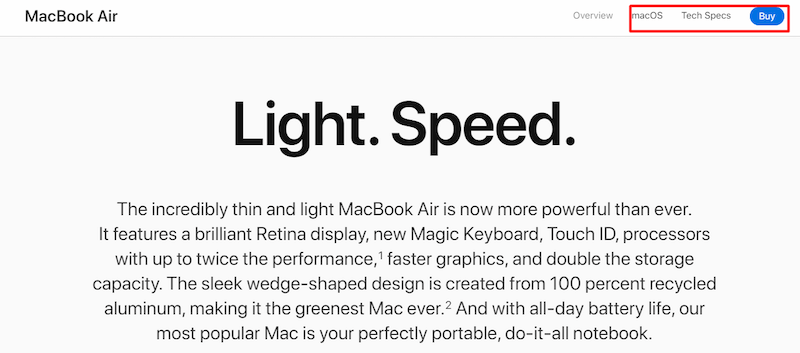
The copy here is the entire text. As you can see, it creates curiosity and persuades a person to learn more about it or to buy it. On the upper right-hand section, you will find different CTAs.
If you break down the component of the paragraph, it tells you what the product can do, but it does not provide you with technical specifications. If you want to see the specifications of the product, you have to click the link called Tech Specs.
The screenshot showed above is just a snapshot text at the beginning of the webpage. If you search for MacBook Air, you will see that the curiosity built up and persuasion continues as you can scroll down the webpage. The texts along with images and graphics drive the persuasion factor with the intention of convincing you to take action that leads to a sale.
Differences between Copywriting, Content Writing and Copyright
Content writing Vs Copywriting:
Sometimes the terms Content writing and Copywriting are used synonymously or inter-changeably. However in reality they are quite different having different formats, structure and purpose.
Content writing refers to creation of a blog post, article or video on your website with the sole purpose of marketing. Copywriting on the other hand is text or content deliberately structured with the purpose of driving persuasion and action. An example of content writing would be this article which is close to 3000 words. Compare this to the link here for a free Copywriting book (which I highly recommend) and you can clearly see the difference. The landing page does not beat around the bush. It takes you straight to the meat of the matter, lets you know its purpose, drives curiosity and ends in an action where you can subscribe for this free book.
Copyright vs Copywriting:
Do not confuse Copyright with Copywriting. A copyright is the legal ownership of a document, a movie, book, etc. It gives you the “right” to own and publish. On the other hand, copywriting is about the skill to write a persuasive copy.

Why is Copywriting Important in Internet Marketing?
Internet marketing is not like salesmanship in the real world. In the real world, you find a prospect, set a schedule to talk to them, and then you convince them to make a purchase. You have the time and the opportunity to develop that inter-personal relationship to discuss your product, answer their questions and then persuade them for sale.
These do not apply in digital marketing and this is is precisely why you need a good copywriter who can address the needs of your target market without talking to them. Copywriting is 10X tough than pursuing a physical sale since it requires a lot of study, research, writing, and proofreading to get the content attractive enough to drive buyer attention. These make copywriting skills vital when it comes to driving sales online. Listed below are some of the reasons explaining why copywriting is important in internet marketing.
Copywriting boosts your SEO:
Copywriting not just drives persuasion and call to action from your audience, it also convinces search engines to rank your page for specific keywords. In online marketing, the copywriting skills are sometimes put synonymous with paid advertisement. While it is undoubtedly true that your paid ads should have good copywriting content; using quality copywriting content in your blogs and website can also help drive organic traffic through search engine optimization (SEO). One of the preferred approaches is to use the services of a digital copywriter who can create unique and informative content for your website. Once you have the foundation laid out, you can start to add keywords or phrases which you think your audience is searching for. This can help your content rank higher on search engines.
Copywriting makes your Product or Service stand out from the crowd:
A good Copywriting strategy can help create an avenue where you can showcase your products or service and make yourself stand out from the crowd. Remember - You are not the only person selling online—no matter what niche you choose, there is always some competition around. Using attractive copywriting skills to can set you apart from competition and attract more clients. Look at these 2 examples for distinctness - they are both promoting copywriting material
A comparison between the 2 will show, both have free material to offer but the offer seems more lucrative in the latter than the former. Jim Edwards has nailed the copywriting strategy in his funnel.
Copywriting Improves User experience:
Copywriting drives Credibility. People click on your call to action link because they are convinced they will derive value from that action. If your copy is good, followed by an equally good deliverable or end product, this will build credibility in the eyes of your customers. Conversely if your end product is not good, it will diminish your credibility. There are many successful copywriters who use clickbaits (use copy as baits without an intention to enhance user experience)—these people may get traffic, but the chances of a sale are dismal.
Copywriting serves as the Door to your World:
A good copy persuades a person to click on your link to learn more. This is the first step for the target customer to take to get into your world. Once he is in, you can now lure him into seeing different aspects of your products or services.
Copywriting generates Sales:
The ultimate motive of copywriting in internet marketing is to generate sales. As mentioned earlier, copywriting is the act of closing a sale in written form. Also mentioned was the fact that Copywriting can help drive SEO. If you merge the above 2, you can increase your sales without spending much on creating and recreating ads. If you can drive traffic to your copy organically, the sales should follow thereafter.
Copywriting is not just a technical style of writing, it is also an art form. With copywriting, you are a-tune with the needs of your target audience, and can preempt before their problems and needs. A good copywriting strategy should be to focus on conversion or sale while enhancing user experience. This is a win win on both ends. It builds credibility and generates a sale
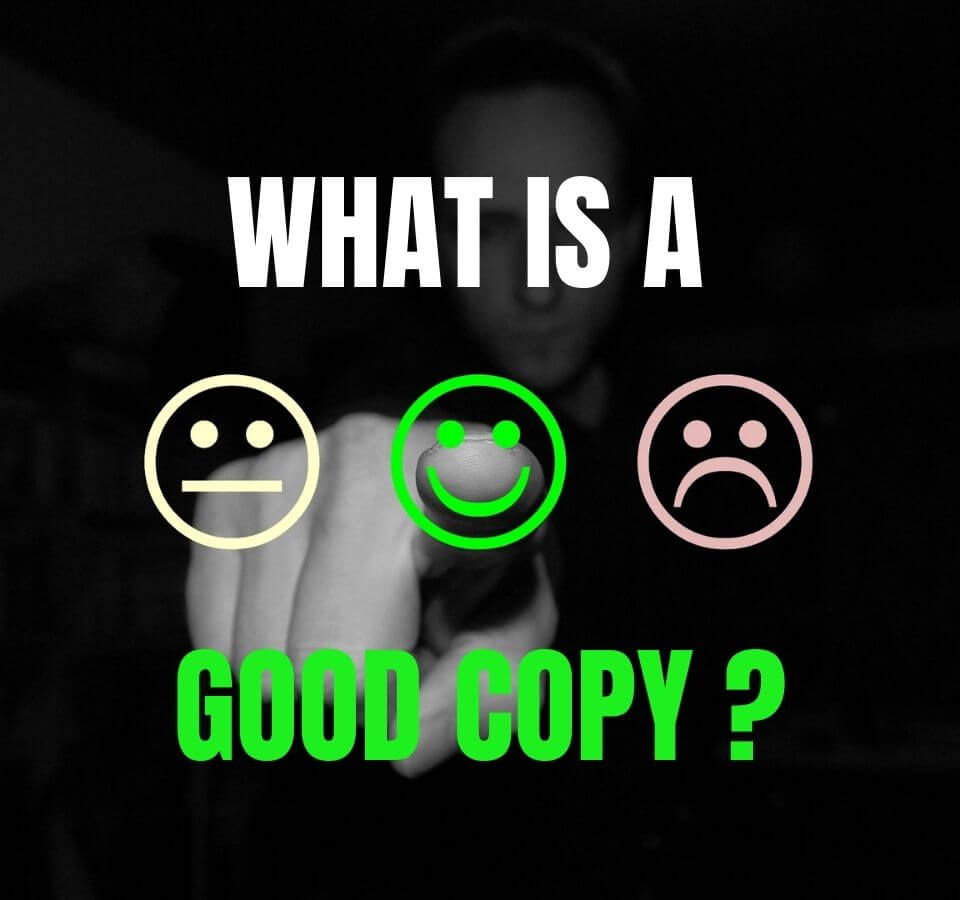
What makes a Good Copy:
What is the best copywriting strategy in internet marketing? This is an important aspect of writing copy. Even if you pay a good and affordable copywriter for your content, you need to understand what makes a good copy so you can maximise its potential.
1. The Headline should be attractive
The headline of your copy must be able to communicate your message loud and clear. If your headline fails to hook your reader into your message, the chances of the user taking action for a sale is minimized.
There are 3 key aspects about writing a headline:
#1 - The Headline should be attractive:
The headline of your copy must be able to communicate your message loud and clear. If your headline fails to hook your reader into your message, the chances of the user taking action for a sale is minimized.
There are 3 key aspects about writing a headline:
#A - Solve a Problem:
A headline must be able to solve a problem. The people who are searching for the keyword in your copy or looking at your ad copy are looking at it for a reason. They either have an interest about the topic or have a problem which needs solution. Having a headline which relates to it is the best way of grabbing their attention. And once you have the attention, you can drive persuasion to make a sale.
#B - Usefulness:
The headline must tell the user what value he/she will derive out of it. An example of a captivating headline is as below: Why? Because it tells the user what value is being offered in clear terms. Anybody who has an interest in copywriting will get hooked by it.
#C - Urgency:
Using the same example as above - you will see the below headline as your scroll down the offer. This is what is urgency is about. You must communicate to your readers the urgency of the offer. It can be either time bound or availability based. An urgency creates an atmosphere to take action now. And this is what you want.
Please note - Urgency may not always fit your copy, especially so if you are not promoting a time bound or availability bound product. This is completely fine since all products are different requiring different offer types. What matters is for you to communicate what your offer is and what value it brings to your customers.
#2 - Simple and Easy to Understand:
Avoid usage of heavy duty words unless your headline mandates it. It is highly recommended to abstain using words which you would not use on a day-to-day basis in your communication. It is a common mistake to overload your headline or message with technical jargon with an intention to make it sound cool and technical. In reality this has the reverse effect on readers. No one wants to google the meaning of a word before reading and understanding your headline. Hence keep the copy simple and use verbiage which a common man can understand without rethinking.
This does not apply if your product or service necessitates the usage of a technical word. It is fine to use technicalities if your target audience can relate to it.
#3 - Describes the Product or Service:
Earlier, we saw a copy for MacBook Air. If you go back to it, you will see that it does not provide technical specifications about the RAM or resolution on anything like that.
Instead, it uses describing words like:
- Incredibly thin
- More powerful
- Brilliant Retina display
- Processors up to twice the performance
- 100% recycled aluminum
- The greenest Mac ever
- All-day battery life
Can you see how they created a description of the product while making it sound enticing? These words used in the copy resonate with the reader. The reader understands what the product can do and at the same time is captivated by how efficiently the product manages to achieve its purpose.
It is thin, so it must be lightweight and easy to carry around. It is made of recycled aluminum, so the product is environment-friendly. It has an all-day battery life—you do not have to charge all the time. The processor is fast—twice the current power of Macs.
This is a prime example of how to describe your product in copywriting. Do not just enumerate specifications. Make the customer understand what your product can do and how it will benefit them.
#4 - Answers Potential Customer Questions:
Its a common saying that your product or service should solve a customer’s problem. The same goes for Copywriting. Your copy should answer customer questions and solve some problems.
Take a look at the below example of MacBook Air:
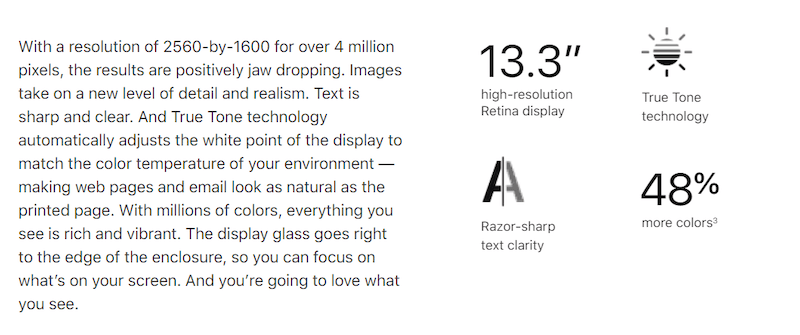
This area of the copy tells the reader the size of the screen, how clear it is, and how many million pixels make it happen. This clearly explains the product and answer questions of customers who would be thinking what the resolution be like in this new Mac.
#5 - Must tell a Story or Must be Conversational :
Lastly, the tone of your voice must be conversational, like as if you are talking to a class or a friend. Take another look at the copy above.
Even if it uses words like pixels, the writer compensates by telling simple statements like “text is sharp and clear” or “everything you see is rich and vibrant.” Never once does the copy use business buzzwords and technical jargons. The simplicity of the style makes it highly appealing.
If your copy meets all these things, the next step is to present it to the right people, which you can do with proper advertising and or pushing it organically through a blog.
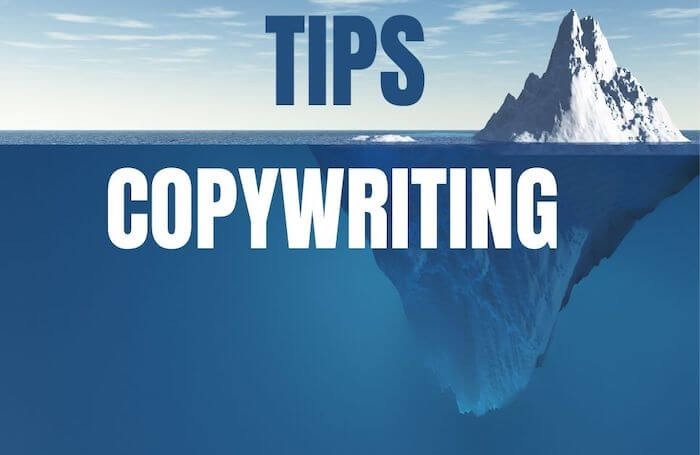
Tips for a Good Copywriting Strategy:
Once you start writing your copy, there are things that you have to consider. You must plan ahead and think how you will attack the problem. Below are some of the pointers on a good copywriting strategy :
#1 - Know your Audience:
You must know who your target market is because you will write your copy for them. Copywriting works best when it is focussed and not centered around a general audience—you need to focus on your target audience who are likely to buy your products.
Next, put yourself in the position of your target buyer. What are their problems? How can you help them? Your copy must be able to present this problem and the solution in a clear and concise manner—something that you cannot do if you do not know who your audience is.
#2 - Make a promise in the Headline:
As mentioned previously, your headline is a major driving factor behind the success of your copy. It must solve a problem, portray the usefulness and urgency at the same time. The headline is supposed to catch attention and hook the users in. Once the user is hooked , you can elaborate more on the solution and urgency in the content and then drive sales. Your content must deliver what was promised on the headline.
#3 - Use Brevity
Brevity refers to being concise and to the point. You copy must be able to communicate the message in as little words as possible. Reading requires effort and hence it is recommended to not beat around the bush and get straight to the point when it comes to copywriting.
Also, avoid long sentences. Keep it short so it is easy to read, scan and digest. Use tools like Readable.IO to check whether your copy is concise enough. You can also use tools like Grammarly
#4 - Offer Benefits
Your copy must tell the reader what they can get out of your product or services. Earlier, we mentioned how a benefit is different from a feature. In the example of the MacBook Air, features refer to the technical specifications of the products. The features are mandatory, but you can put them on a separate page. What really matters is the benefit—the problem that your product or your service solves. If you cannot provide this benefit to your reader, your copy is going to fail.
#5 - Have a Clear Goal
as you write your copy, you must provide a clear guidance on what you want the reader to do. Do you want him to click a button, click a link, register, buy, enroll?
You need to have this goal at the onset of the copywriting activity. As you write your copy, insert your CTAs (call to action) all over. These CTAs are opportunities for people to do what you want them to do.
Remember - The goal is to drive persuasion with subtlety. In your copy, you are softly going to tell the reader that you want him to click this or that button, or that you want the reader to purchase your product.
These five are the copywriting basics and fundamentals. If you know who your target market is, you know their pain points. If you know what their problems are, you will also be able to prove a solution.
Writing is not easy—chances are you have to revise your copy several times before you get it right. Use online tools, such as Grammarly and the Hemmingway app, to make things easy for you. Both of these tools can help you identify and correct your errors. They will also provide recommendations i.e. how to make your copy better.
Pro Tip - write your copy at night and then sleep over it. Read it the following day and you will realize that there are many aspects of it that you want to change and finalize.
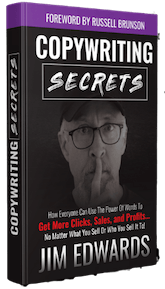
The Bonus Free Book - Copywriting Secrets
Copywriting is a big and very important undertaking you need to do for your blog / business. If you are new to Copywriting - chances are, that even with the guidance shared above, this all still seems like a big activity. There could be scenarios in your mind which we have not covered above or you may have more elaborate questions for which you want some more clarification. Or you could be a seasoned marketer looking for an expert opinion on copywriting. Either ways, I highly suggest reading (or listening) to the book “Copywriting secrets” by Jim Edwards. The book is available free of cost. The only charges are for shipping and handling (less than $10)
Jim is the founder of Guaranteed Response Marketing, LLC, is an Internet expert, marketing entrepreneur, newspaper columnist, author, motivational speaker and elite mentor and coach Having gained personal and financial freedom, he shares his proven strategies with self-motivated, hard-working people to help them attain personal and financial independence. He is one of the master copywriters in the online marketing world and is one of the people responsible behind the massive success of Clickfunnels.
His book copywriting secrets is considered to be the holy grail of copywriting. Along with his book, he also has an award winning copywriting software, Funnel scripts, which helps generate copywriting content within seconds of providing inputs. You can check out the software here.
Copywriting Secrets: The only book you will ever need for Copywriting:
Copywriting secrets is considered to be the holy grail of copywriting. This is a free book from The title is Copywriting Secrets, and the author is Jim Edwards. This is the book that taught me how to master copywriting.
This book is pretty much a shortcut on how to learn the best practices about copywriting. You no longer have to read a lot of blog posts about the subject, and you also do not have to watch a lot of YouTube videos.
So, what did I get from this book:
- I learned how to increase my sales
- I found the secrets on how to trigger people to buy
- I understood the underlying principles of need
- I learned where to find my customers
- I managed to create a copywriting structure that works
- I developed a method to build a list of subscribers
For a long time, I struggled with how to make my websites work. It was too difficult for me to get subscribers to my sites, let alone build a fan-base and make a sale. Today, all the things I do revolve around the secrets I found in this book.
The book has a total of 31 secrets, which are broken down as chapters. Each secret details things that you would not have learned yourself. For example, it tells you what a bullet formula is, or what people need and want, and how you can exploit these needs and wants.
And you know what? The book is free. Yes, all you have to do is to pay for the shipping cost. The book is a physical copy that will be shipped to your house.
If you want a digital copy, you can get one, too. It also has an audiobook version, which you have to purchase separately.
Now, this book has done so much for me in terms of copywriting. There is so much that I learned here that it is impossible to enumerate all of them.
Here are some of the things you can expect from the book:
- Difference between regular writing ad copywriting
- Secret patterns of human buying behaviour
- The importance of copywriting in advertising
- Reasons why people buy at all
- 11 questions you need to answer about your product and service before you sell it
- The truth about sales copy
- How to create a customer avatar
- How to define your niche
- Where to find people in your niche
- How to create momentum to make a sale
- Eight things you can do to improve your revenue
- How to use Amazon as your market research tool
As you can see, all these things that you learn will make up the words that you put in your copy. It is a 305-page book with a foreword from one of the most renowned marketers in the world, Russel Brunson.
Summary: The Golden Copywriting Secrets for Internet Marketing
Copywriting is not easy—it takes a lot of practice and mistakes to get it done right. But if you are persistent enough, you can be really good at it. You will have the ability to create ads that persuade buyers to buy your products or services.
The good thing about copywriting is that you can also use it as a source of income. There are many freelance sites where you can offer your service as a copywriter.
Jim’s book is by far the best book I have read about this subject matter. It gave me new perspectives on how to write from a customer’s angle, not mine. It also showed me techniques that I have never seen before. As such, I highly recommend that you get a copy of the book.

